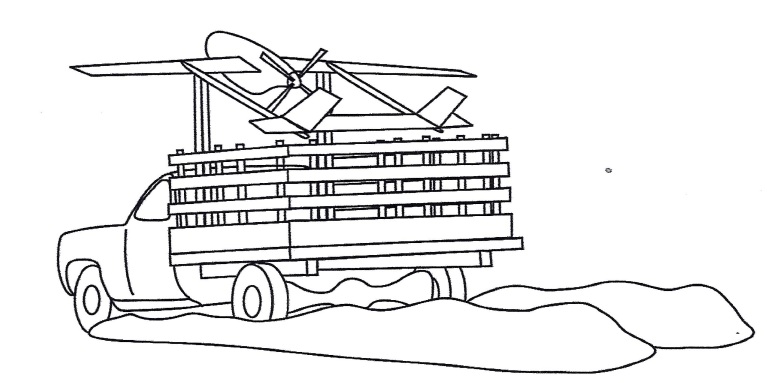The launch and recovery element is an area that requires the most human interaction. Some UASs require elaborate launching procedures, while others can be hand thrown toward the sky. Some large UASs require long runways and other field support equipment such as fuel trucks, ground power units, and ground tugs. Similarly, the requirements for recovery procedures vary widely. Most small UASs that are used for geospatial projects require simple procedures and can be hand held or launched with the use of a catapult.
Some UASs, such as target drones, are air-launched from fixed-wing aircraft. Usually, large UASs are equipped with wheels for takeoff and landing and do not need special equipment, while smaller UASs need a variety of launch and recovery strategies depending on the complexity of the system.
A truck driven at a speed of 60 mph can be used to launch a small UAS assuming that the launching site contains a smooth surface for the truck to use. In this type of launching method, the UAS is held in a cradle above the truck cab with its nose pointed high toward the launching path, Figure 2.13. Once speed is sufficient for takeoff, the UAS is released and lifts upward toward its takeoff path.

Many small and medium-sized UAS launch systems have a requirement to be mobile, or in other words, to be mounted on a truck or a trailer. Such mobile launchers fall within one of the following types:
- Rail Launchers: The UAS is held fast to a guide rail while it is accelerated to launch speed.
- Pneumatic Launchers: Compressed air or gas is used to provide the necessary force for launching the UAS.
- Hydraulic/Pneumatic Launchers: Compressed gaseous nitrogen is used as the power source for launch.
- Zero Length Rocket Assisted (RATO) Launching: There is no rail or track used in this mode of launching. The UAS rises directly from a holding mechanism, and it will be in free flight once the rocket is fired.
For more details on these launchers, refer to chapter 17 of the supplemental textbook Introduction to UAV Systems, 4th edition.
To Read
- Section 3.6 of Chapter 3 of Introduction to the Unmanned Aircraft Systems
- Chapter 17 of Introduction to UAV Systems (Aerospace Series)